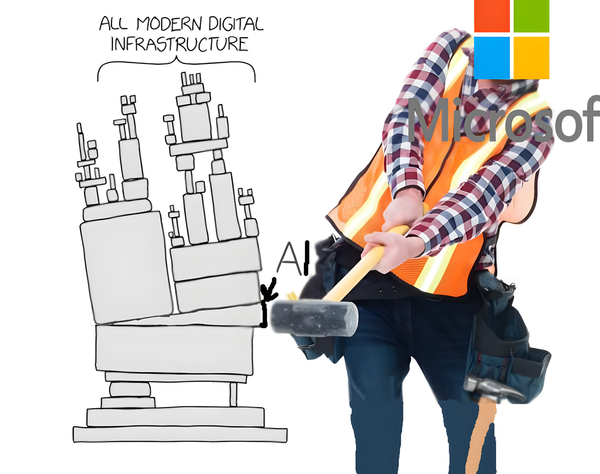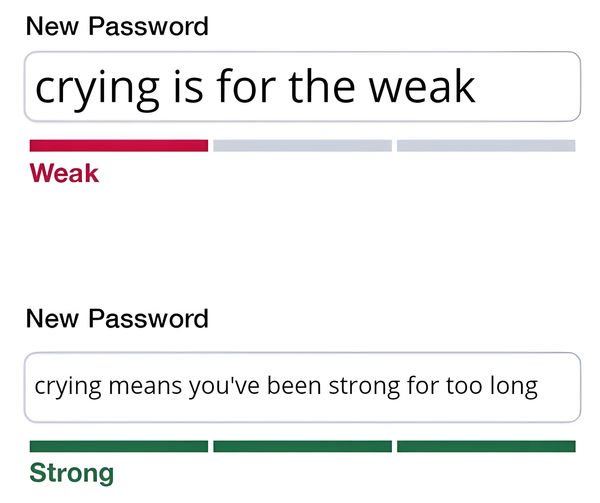The Managers' Guide #120
nsights for engineering leaders on AI's true impact, empathetic management, navigating project despair, career decisions, and long-term strategy.

Headline: “Women who own horses live longer”
Implied correlation: Horses make you live longer.
Reality: If you own a horse, you can likely afford health insurance.
The She-Wolf of Hackers.Town
Where's the Shovelware? Why AI Coding Claims Don't Add Up
- 🌊 The Predicted Flood Never Came — The article starts by noting that a year ago, many predicted that AI coding tools would lead to a massive flood of low-quality “shovelware” apps. However, this deluge has not materialized, and app stores aren't drowning in AI-generated junk.
- 🧩 Writing Code is the Easy Part — The author argues that the real bottleneck in software development isn’t the physical act of writing code. The truly difficult and time-consuming parts are everything else: defining the problem, designing the user experience, marketing, distribution, and maintenance.
- 🚀 A “Force Multiplier” for Experts — Current AI tools like Copilot primarily benefit experienced developers, making them more efficient at tasks they already know how to do. They don't magically empower a non-developer to build, package, and launch a complex, coherent application from scratch.
- 🎯 AI Can’t Do Product Management — The core reason we aren’t seeing shovelware is that AI lacks product vision. It can generate a function when asked, but it can’t decide what to build, why it should be built, or how all the pieces should fit together to create something a user would actually want. That still requires a human.
How to be an empathetic manager (without becoming a therapist)
You don't need to absorb everyone’s frustrations. Here’s how to listen to grievances without having folks dump their frustrations onto you.
- ⚠️ The Manager’s Empathy Trap — The article identifies a common dilemma where well-intentioned managers, trying to be empathetic, find themselves acting as untrained therapists. This leads to manager burnout and prevents employees from getting the professional help they might actually need.
- 🔍 Empathy vs. Therapy — A critical distinction is made: Empathy is about listening to understand someone’s feelings and how they impact their work. Therapy is about diagnosing and treating the root cause of those feelings, which is outside a manager’s scope and expertise.
- 🛠️ The “Listen, Label, Limit” Framework — The author proposes a practical, three-step method for navigating these conversations effectively:
- Listen: Create a safe space for the employee to share what's on their mind.
- Label: Acknowledge their emotion to validate their experience, using phrases like, “It sounds like you’re feeling really overwhelmed.”
- Limit: Respectfully set a boundary and pivot the conversation back to work-related support by asking, “Given that, how can we make work more manageable for you right now?”
- 🤝 The Goal is Support, Not Solving — This framework allows a manager to demonstrate genuine care and support without taking on the responsibility of fixing an employee’s personal problems. It keeps the focus on creating a supportive work environment and making practical adjustments, which is the manager’s true role.
The valley of engineering despair
- 📉 Introducing the Valley of Despair — The article describes a predictable and painful phase in most engineering projects called the “Valley of Engineering Despair.” It’s the messy middle period that comes after the initial easy wins, where the simple prototype can no longer handle growing complexity, and progress feels slow and frustrating.
- ⚙️ From Prototype to Product — This valley marks the necessary transition from a simple proof-of-concept to a robust, well-architected system. The initial shortcuts and “technical debt” taken to get started now come due, creating friction that makes every new feature or change difficult to implement.
- 🔄 The Temptation of the “Great Rewrite” — When stuck in the valley, teams are often tempted to either abandon the project or start over with a “Great Rewrite.” The author argues this is usually a trap, as a rewrite often just resets the clock, leading the team back into the very same valley later on.
- 🧗 The Only Way Out is Through — The solution isn’t to start over, but to persevere with the unglamorous work of climbing out. This means deliberately shifting focus from adding new features to improving the system’s health through refactoring, adding tests, paying down debt, and building a solid foundation for future development.
On How Long it Takes to Know if a Job is Right for You or Not
- 🚦 Your Gut Knows First — The article strongly advises trusting your initial impressions. You can learn a massive amount on day one by observing the basics: Is your equipment ready? Do people seem stressed or happy? These early “smell tests” are often highly accurate indicators of the company’s underlying culture and competence.
- ✨ The One-Month Honeymoon — The first 30 days are described as the “honeymoon period.” Everyone — including you and the company — is on their best behavior. This is the ideal version of the job. While positive, it’s not the full reality, so enjoy the optimism but don’t make your final judgment quite yet.
- 🎭 The Six-Month Reality Check — This is the most critical milestone. By the six-month mark, the “mask comes off.” The initial politeness fades, and you see the company’s true dysfunctions, recurring problems, and political landscape. According to the author, by this point, you know with certainty whether the job is a long-term fit.
- 🔒 The One-Year Point of Integration — If you’re still at the job after a year, you are no longer an outsider looking in; you have become part of the system. The problems you noticed at six months are now things you have implicitly accepted or learned to work around. You’ve either found your place or become complacent.
Short-term vs Long-term
- ↔️ The Short vs. Long-Term Fallacy — The article argues that teams often get trapped in a false choice between quick, short-term wins and a perfect, long-term vision. This binary thinking leads to analysis paralysis, preventing any meaningful progress.
- 🔗 Adopt an “And” Mindset — Instead of choosing “or,” the author advocates for an “and” approach. The crucial question to ask is: “What is the smallest thing we can do right now that is also a step in our desired long-term direction?”
- 🗺️ Stay on the Path — The long-term vision is compared to a direction on a map, not a final destination you have to see perfectly. Each short-term action should be a deliberate step along that path. This approach ensures that even small, immediate tasks contribute to the bigger picture.
- 🚀 Action Creates Clarity — The article concludes that perfect long-term plans are an illusion. True clarity comes from taking small, intentional actions. Building something small now provides valuable feedback and momentum that no amount of theoretical planning can replicate.
My new(sletter) is aliiiive! Short, sharp technical explainers delivered weekly. From protocols to AI, we make complex ideas click.
That’s all for this week’s edition
I hope you liked it, and you’ve learned something — if you did, don’t forget to give a thumbs-up, add your thoughts as comments, and share this issue with your friends and network.
See you all next week 👋
Oh, and if someone forwarded this email to you, sign up if you found it useful 👇



